Description
In industrial automation, where precise synchronization of rotating machinery can mean the difference between smooth operations and catastrophic failures, engineers often grapple with the challenges of rotor position feedback in high-power drives. Think of a steel rolling mill where turbine rotors spin at variable speeds, demanding instantaneous data on angular position to prevent torque imbalances that could warp materials or halt production lines. Or envision a hydropower plant’s generator, exposed to fluctuating loads and environmental stresses, where delayed or noisy feedback signals from the rotor lead to inefficient energy conversion and grid instability. These scenarios highlight a core need: a reliable mechanism for capturing and relaying rotor dynamics into your control loops, ensuring system stability without introducing latency or vulnerability to electromagnetic interference.
This is precisely the territory where the ABB 3ASC25H219B DATX133 excels as a rotor feedback module, tailored for ABB’s DCS and drive systems to deliver high-reliability I/O signals in process control environments. By focusing on the user’s goal of seamless data acquisition from rotating components, it mitigates common pitfalls like signal distortion in harsh conditions or integration friction with legacy equipment. In typical setups—such as wind farm inverters or chemical reactor agitators—the ABB 3ASC25H219B DATX133 becomes indispensable when uptime hinges on accurate rotor synchronization, allowing controllers to adjust excitation currents on the fly for optimal performance. Its design emphasizes modular integration, so you avoid the headaches of custom signal conditioning or protocol converters that bog down engineering teams.
What makes the ABB 3ASC25H219B DATX133 a smart pick in industrial automation isn’t just its technical chops, but how it empowers proactive control. In environments with continuous vibration or thermal cycling, it safeguards against feedback loss that could trigger false trips, keeping your I/O signal chains robust and your overall system responsive. For teams retrofitting older excitation systems, this module cuts through the noise—literally—by filtering out interference while supporting diagnostics that pinpoint issues before they escalate. Whether you’re tuning generators for peak efficiency or stabilizing motors in batch processing, it ensures that rotor data flows cleanly to your DCS, fostering the high reliability that underpins regulatory compliance and cost-effective operations.
The ABB 3ASC25H219B DATX133 operates at the intersection of field devices and central controllers in your automation stack, serving as a dedicated interface for rotor-mounted encoders or resolvers in ABB’s AC 800M or excitation control platforms. It captures pulse-encoded position data from the rotor shaft, conditioning it into clean digital or analog outputs that feed directly into backplane I/O architectures, whether via Profibus DP for distributed setups or Ethernet/IP for networked oversight. This isn’t a passive passthrough; it’s an active translator that handles high-speed sampling—up to pulse rates suited for 30kHz operations—while embedding redundancy options like dual-channel inputs to maintain signal integrity during transients.
- 3ASC25H219B DATX133
- 3ASC25H219B DATX133
In a full system, picture it mounted alongside drive inverters in a cabinet: rotor signals arrive via shielded cabling, get amplified and error-checked by the module’s onboard logic, then propagate to the controller for real-time torque vectoring or synchronization algorithms. It supports hot-plug functionality, so you can swap it mid-process without powering down, and its diagnostic layer—accessible through ABB’s Control Builder software—flags anomalies like encoder slippage via integrated status relays. Positioned in the lower I/O layer, the ABB 3ASC25H219B DATX133 bridges the mechanical world of rotors to the digital realm of SCADA, easing scalability in multi-drive configurations. For hybrid environments mixing ABB gear with third-party PLCs, its protocol flexibility minimizes custom gateways, letting you focus on tuning control loops rather than chasing compatibility quirks.
| Specification | Details |
|---|---|
| Model Number | 3ASC25H219B DATX133 |
| Brand | ABB |
| Type | Rotor Feedback Module |
| Input Voltage | 24 V DC |
| Operating Temp Range | -25°C to +70°C |
| Mounting Style | DIN Rail |
| Dimensions | 150 x 100 x 50 mm |
| Weight | 1.5 kg |
| Interface/Bus | Profibus DP / Backplane |
| Compliance | CE, RoHS, IEC 61508 (SIL 3) |
| Supported Protocols | Profibus DP, Modbus RTU, Ethernet/IP |
| Typical Power Draw | 5 W |
Choosing the ABB 3ASC25H219B DATX133 equips your setup with a level of reliability that’s engineered for the unforgiving realities of rotating equipment, where even minor feedback glitches can amplify into major disruptions. In practice, this means your drive systems hold steady through load swings, delivering performance consistency that translates to fewer efficiency losses—vital in energy-intensive operations where every percentage point counts. The module’s robust signal processing doesn’t just prevent dropouts; it enables finer-grained control adjustments, like optimizing rotor angles for reduced harmonic distortion, which in turn lowers wear on bearings and extends asset life without constant oversight.
Beyond that, it streamlines integration in ways that reduce engineering overhead right from the start. Slotting into existing ABB backplanes with minimal reconfiguration, it frees your team to prioritize algorithm development over wiring marathons, while its diagnostic transparency cuts troubleshooting time by surfacing rotor-specific alerts directly in your HMI. Engineered for long-term performance in dusty or humid plants, the ABB 3ASC25H219B DATX133 ensures that maintenance stays predictive rather than reactive—think quarterly health scans via software polls that forecast encoder degradation. Overall, it fosters a more resilient automation ecosystem, where high reliability meets practical scalability, helping you hit KPIs on throughput and energy savings with less risk.
In power generation facilities, the ABB 3ASC25H219B DATX133 is routinely deployed for generator excitation control, capturing rotor position data to synchronize phases amid variable grid demands—critical for maintaining stability in process control environments where downtime costs thousands per hour. Its ability to handle fast data cycles shines here, filtering noise from electromagnetic fields to ensure precise voltage regulation and prevent blackouts.
Shifting to oil and gas, you’ll see it in compressor stations, interfacing with turbine rotors to monitor speed and angle for surge protection; in these harsh conditions, its wide temp tolerance and vibration resistance uphold critical system uptime, integrating seamlessly with SCADA for remote oversight. For manufacturing sectors like pulp and paper, the module supports web drive synchronization in calendering lines, where accurate rotor feedback prevents material tears during high-speed runs, bolstering efficiency in continuous process control setups.
3ASC25H214 DATX130 – Compact variant for basic rotor monitoring in low-pulse applications.
3ASC25H204 DAPU100 – Power supply companion for excitation systems with integrated feedback.
3ASC25H208 DATX100 – Entry-level feedback board for legacy AC 800M upgrades.
3BHE014070R0001 DO801 – Discrete output module pairing for rotor alarm signaling.
3BSE018877R1 PFSK152 – Signal conditioner add-on for enhanced analog rotor inputs.
3HNA006104R0001 CI830 – Communication interface for Profibus extensions in drive networks.
3BHB018008R0003 S-113H – Motor protection relay alternative for combined feedback and safeguarding.
When preparing to deploy the ABB 3ASC25H219B DATX133, start by confirming compatibility with your drive’s encoder type—resolver or incremental—and cross-reference the pulse resolution against your control loop requirements to avoid undersampling. Allocate sufficient cabinet space for airflow, as the module dissipates heat under full load; a simple thermal audit using your enclosure’s specs will flag any risks. Firmware alignment is key too: pull the current release from ABB’s resource library and match it to your controller’s version, testing a bench simulation if possible to validate signal handoff.
Post-installation, maintenance revolves around vigilance without excess effort. Bi-monthly checks of the status LEDs can reveal early signs of signal attenuation, prompting a quick cable continuity test with a multimeter. For sites with high EMI, inspect shielded connectors semi-annually, re-torquing to spec and swapping if corrosion shows. An annual full diagnostic run—leveraging ABB’s diagnostic tools to log rotor traces—helps trend performance, catching drifts like gradual pulse jitter before they affect synchronization. These routines, grounded in the module’s self-reporting capabilities, keep your industrial automation humming reliably, turning potential weak points into strengths.

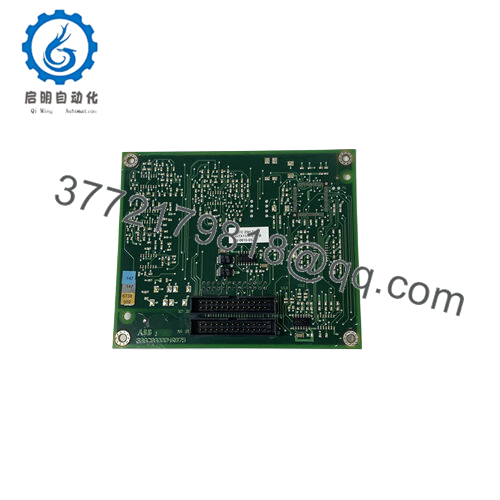
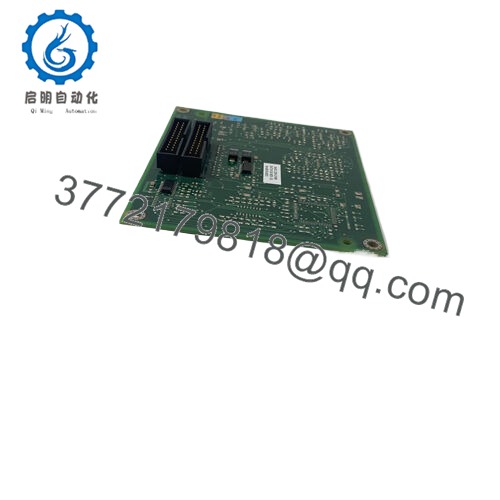
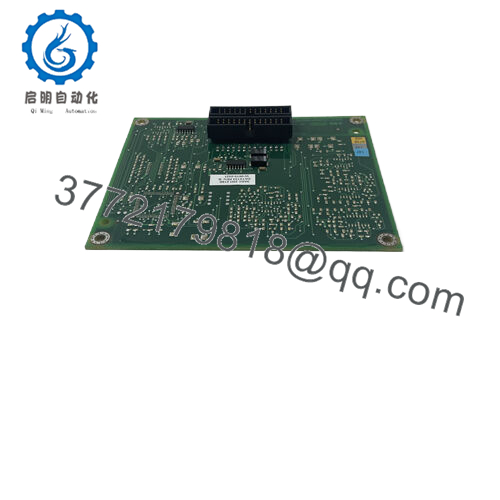
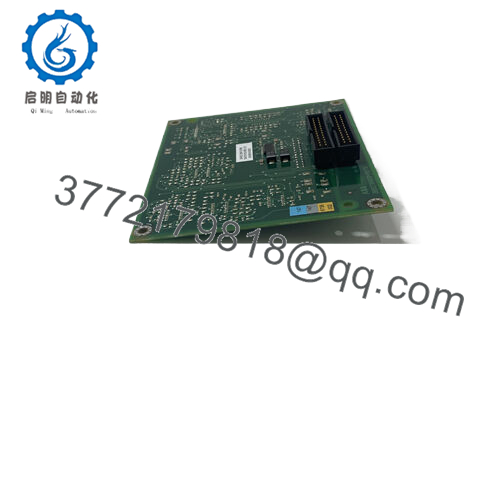
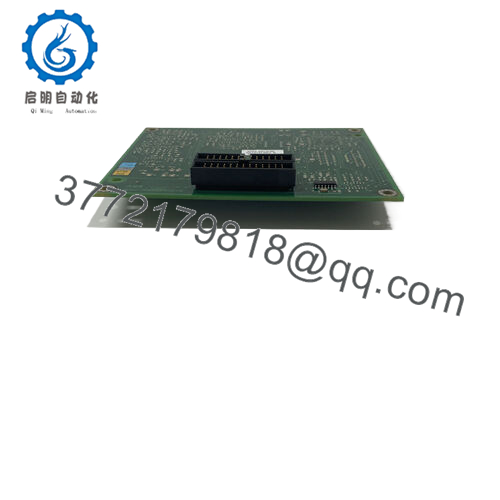
 WhatsApp: +86 16626708626
WhatsApp: +86 16626708626 Email:
Email:  Phone: +86 16626708626
Phone: +86 16626708626


